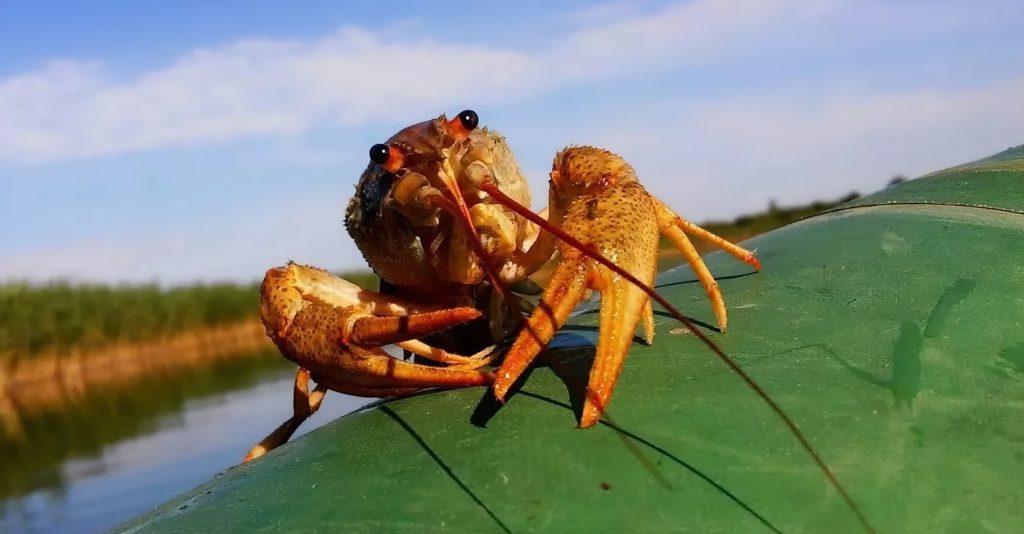Crayfish, also known as crawfish or crawdads, are a popular target for many anglers. These freshwater crustaceans can be found in rivers, streams, and lakes throughout the world. Catching crayfish can be a fun and rewarding activity, but it’s important to have the right techniques and tackle to ensure a successful trip.
Understanding Crayfish Behavior
Crayfish are most active at night, so fishing during the evening or early morning hours can increase your chances of success. They are typically found in areas with rocks, logs, and other submerged debris, as these provide shelter and food sources. Crayfish are also sensitive to changes in water temperature and quality, so fishing during the right time of year and in the right conditions can greatly increase your chances of catching them.
Tackle for Crayfish Fishing
When choosing tackle for crayfish fishing, it’s important to consider the size and behavior of these crustaceans. A lightweight spinning rod and reel combo is ideal for this type of fishing, as it provides sensitivity and control while allowing for easy casting and retrieval. Using a 4 to 6-pound test line is recommended, as it provides enough strength to handle the weight of the crayfish and withstand their sharp claws, which can easily cut through weaker lines.
When it comes to hooks, small sizes are recommended for catching crayfish. Hooks in sizes 6 to 10 are ideal, as their mouths are small and delicate. A good technique for baiting a hook is to thread a small piece of hot dog or bacon onto the hook, securing it with a rubber band. This will attract crayfish and entice them to grab onto the bait, allowing you to easily hook them.
It’s also important to consider the weight of your tackle when fishing for crayfish. Using heavy weights can cause the bait to sink too quickly, making it difficult to catch these bottom-dwelling creatures. A weight of 1/8 to 1/4 ounce is recommended for crayfish fishing, as this will allow the bait to sink slowly and naturally, giving you a better chance of catching these elusive crustaceans.
Bait for Crayfish Fishing
When it comes to bait for crayfish fishing, there are several options to consider. One of the most popular baits for catching crayfish is chicken liver. The strong scent of the liver can attract crayfish from a distance, making it easier to lure them in. To use chicken liver as bait, simply cut a small piece of the liver and thread it onto the hook.
Another effective bait for crayfish is cheese. The strong odor of cheese can also attract crayfish, making it an ideal bait option. Similar to chicken liver, simply cut a small piece of cheese and secure it onto the hook using thread or a rubber band.
Believe it or not, hot dogs can also be a great bait option for catching crayfish. The high salt content and strong scent of the hot dog can lure crayfish in quickly. Simply cut a small piece of hot dog and secure it onto the hook using thread or a rubber band.
Another popular method for catching crayfish is to use a small trap or cage. These traps can be baited with a variety of foods, including fish scraps, canned cat food, or even fruit. Once the bait is set, the trap can be left overnight and checked in the morning for a fresh catch of crayfish.
Techniques for Catching Crayfish
One popular technique for catching crayfish is known as “snagging.” This involves dragging the bait slowly along the bottom of the water, allowing the crayfish to grab onto it with their claws. Once the crayfish has grabbed onto the bait, gently pull the line to bring it to the surface. Another technique is to use a small net or scoop to scoop the crayfish out of the water once they have grabbed onto the bait.
Ethics and Conservation
As with any form of fishing, it’s important to practice ethical and conservation-minded techniques when targeting crayfish. This includes releasing any undersized or female crayfish, as well as not overfishing any particular area. It’s also important to be aware of regulations and laws regarding crayfish fishing, as they may vary by location.
In conclusion, catching crayfish can be a fun and rewarding activity for anglers of all ages and experience levels. With the right techniques and tackle, a successful trip can be had while also practicing ethical and conservation-minded fishing practices.

